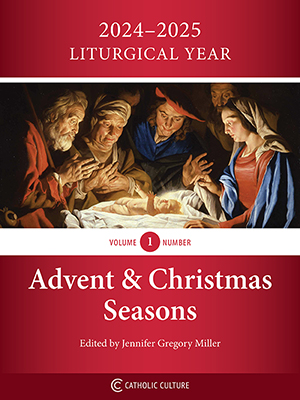Questions About the Tabernacle
by Unknown
| QUESTION Members of our parish have been told that our church building must be "renovated." Although we are in the middle of a "process" and have been assured that no final decisions have been made, the most frequently mentioned changes are the relocation of the tabernacle, moving the altar forward so that it will be surrounded on three sides by the congregation and removal of the communion rail. We have been told that there are "documents" that mandate these changes, but the pastor and the design consultant never show us any. Do such requirements exist?
|
ANSWER
As far as the relocation of the altar and removal of the communion rail are concerned, the answer is "no." The norms on the location of the tabernacle are covered in the lead article by Duane Galles. I asked one of our consulting canon lawyers to provide the following comments on the first two issues. I might add that he holds a graduate degree in liturgy in addition to his canon law degree. CMW
Since the end of the Second Vatican Council in 1965, many pastors and superiors of religious communities in the United States and Canada have revamped their churches and oratories in the name of conciliar reform, often against the will of their members. In one incident the pastor of a parish in Texas had quietly removed the upper structures of the three Gothic altars in his church, leaving only the mensa of each. "Vatican II says we have to get rid of these things," he explained to the horrified parishioners who appeared the following Sunday. Lest he be accused of irreverence towards holy things he directed that the disassembled parts be buried in a Christian manner. To this day their place of internment remains a carefully guarded secret.
In another incident in the Midwest, a parishioner wrote to challenge the claim that the drastic changes planned for his parish were mandated by Church "rules." His bishop replied, "The ‘rules’ to which I refer can be found in a book entitled, Documents on the Liturgy, 1963-1979: Conciliar, Papal, and Curial Texts. This book was published by the Liturgical Press in 1982 and is still in print." For documents published since 1979, The bishops suggested the Bishops’ Committee on the Liturgy Newsletter. Both sources are in the Saint Joseph Foundation’s library and a thorough search produced no "rules" demanding the removal of the communion rail or thrusting the altar into the midst of the congregation.
The norms governing the arrangement and furnishing of churches are not found in one place, but The General Instruction of the Roman Missal (GIRM) contains most of them. In the context of this discussion, the GIRM is important not only for what it says but for what it does not say. After a cursory look at many of the church renovations in American in light of this document, one quickly arrives at the conclusion that something has gone amiss.
Indeed, nowhere in the GIRM or the documentation of the Vatican II reform does one find a call to remove, tear down or recycle the high or main altar. Although the communion rail, which has been a fixture in Catholic churches since the 16th century, has lost much of its functionality, nowhere is mention made that it has to be removed or that it cannot be in the plans for a new church. If truth were told, some of the innovations we have witnessed never even occurred to the Fathers of the Council.
As a sad commentary upon the ecclesial life in the United States and Canada in the thirty-five years since the conclusion of the Second Vatican Council, the respective episcopal conferences have yet to promulgate the very norms to protect and to govern the use of the material things of worship. In this vacuum of governance others have been all too willing to assume this role. The havoc wrought by their misguided efforts is all too visible. © Christifidelis, Saint Joseph Foundation, 11107 Wurzbach, #601B, San Antonio, TX 78230-2553, (210) 697-0717.
This item 1159 digitally provided courtesy of CatholicCulture.org






